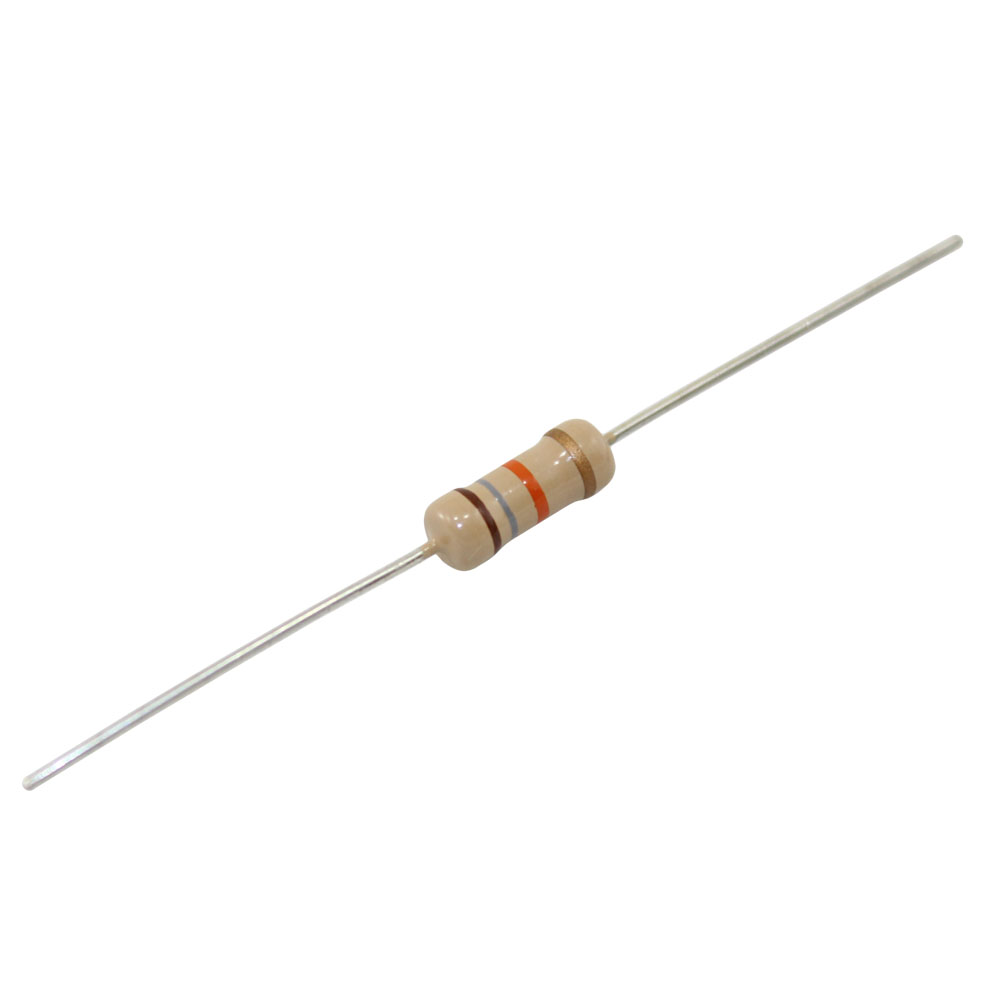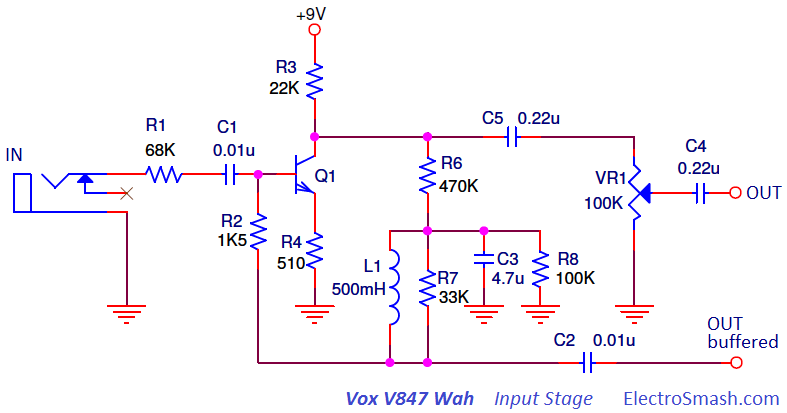
Resistance 22k
Resistance 2 is a science fiction first-person shooter video game developed by Insomniac Games and published by Sony Computer Entertainment for the PlayStation 3. The game was released in North America on November 4, 2008, in Australia on. Order today, ships today. CFR-25JB-52-22K – 22 kOhms ±5% 0.25W, 1/4W Through Hole Resistor Axial Carbon Film from Yageo. Pricing and Availability on.
[Click the image to enlarge it]
Potentiometer Pin Configuration
Pin No. | Pin Name | Description |
1 | Fixed End | This end is connected to one end of the resistive track |
2 | Variable End | This end is connected to the wiper, to provide variable voltage |
3 | Fixed End | This end is connected to another end of the resistive track |
Features
- Type: Rotary a.k.a Radio POT
- Available in different resistance values like 500Ω, 1K, 2K, 5K, 10K, 22K, 47K, 50K, 100K, 220K, 470K, 500K, 1 M.
- Power Rating: 0.3W
- Maximum Input Voltage: 200Vdc
- Rotational Life: 2000K cycles
Note: Complete Technical Details can be found at the datasheet given at the end of this page.
Alternative Variable Resistor
Resistors, Trimmers, TrimPot
Selecting a Potentiometer
Potentiometers also known as POT, are nothing but variable resistors. They can provide a variable resistance by simply varying the knob on top of its head. It can be classified based on two main parameters. One is their Resistance (R-ohms) itself and the other is its Power (P-Watts) rating.
The value or resistance decides how much opposition it provides to the flow of current. The greater the resistor value the smaller the current will flow. Some standard values for a potentiometer are 500Ω, 1K, 2K, 5K, 10K, 22K, 47K, 50K, 100K, 220K, 470K, 500K, 1 M.
Resistors are also classified based on how much current it can allow; this is called Power (wattage) rating. The higher the power rating the bigger the resistor gets and it can also more current. For potentiometers the power rating is 0.3W and hence can be used only for low current circuits.
How to Use a Potentiometer
As far as we know resistors should always have two terminals but, why a potentiometer has three terminals and how to we use these terminals. It is very easy to understand the purpose of these terminals by looking at the diagram below.
The diagram shows the parts present inside a potentiometer. We have a resistive track whose complete resistance will be equal to the rated resistance value of the POT.
As the symbol suggests a potentiometer is nothing but a resistor with one variable end. Let us assume a 10k potentiometer, here if we measure the resistance between terminal 1 and terminal 3 we will get a value of 10k because both the terminals are fixed ends of the potentiometer. Now, let us place the wiper exactly at 25% from terminal 1 as shown above and if we measure the resistance between 1 and 2 we will get 25% of 10k which is 2.5K and measuring across terminal 2 and 3 will give a resistance of 7.5K.
Her beauty and bright personality have earned her the nickname “The Goddess of Saints”.Name: SeraAge: 19Gender: FemaleOccupation: StudentHobby: Costume PlayBlood Type: OAs the sister of Joony and the daughter of Davark, Sera tries to fix the relationship between her brother and her father all the time. Zone4 gg.
So the terminals 1 and 2 or terminals 2 and 3 can be used to obtain the variable resistance and the knob can be used to vary the resistance and set the required value.
Applications
- Voltage and Current Control Circuits
- Used as volume control knobs in radios
- Tuning or controlling circuits
- Analog input control knobs
2D Diagram (Model P232)
What is a Variable Resistor?A variable resistor is a device that is used to change the resistance according to our needs in an electronic circuit. It can be used as a three-terminal as well as a two terminal device. Mostly they are used as a three terminal device. Variable resistors are mostly used for device calibration. Working of Variable ResistorAs shown in the diagram below, a variable resistor consists of a track which provides the resistance path. Two terminals of the device are connected to both the ends of the track. The third terminal is connected to a wiper that decides the movement of the track.
The motion of the wiper through the track helps in increasing and decreasing the resistance. Variable Resistors WorkingThe track is usually made of a mixture of ceramic and metal or can be made of carbon as well. As a resistive material is needed, carbon film type variable resistors are mostly used.
They find applications in radio receiver circuits, audio amplifier circuits and TV receivers. For applications of small resistances, the resistance track may just be a coil of wire.
The track can be in both the rotary as well as straight versions. In a rotary track, some of them may include a switch. The switch will have an operating shaft which can be easily moved in the axial direction with one of its ends moving from the body of variable resistor switch.The rotary track resistor with has two applications.
One is to change the resistance. The switch mechanism is used for the electric contact and non-contact by on/off operation of the switch. There are switch mechanism variable resistors with an annular cross-section which are used for the control of equipments. Even more, components are added to this type of a variable resistor so as to make them compatible with complicated electronic circuits. A high-voltage variable resistor such as a focus pack is an example. This device is capable of producing a variable focus voltage as well as a screen voltage. It is also connected to a variable resistance circuit and also a fixed resistance circuit bleeder resistor to bring a change in the applied voltage.
For this, both the fixed and variable resistor are connected in series.A track made in a straight path is called a slider. As the position of a slider cannot be seen or confirmed according to the adjustment of resistance, a stopping mechanism is usually included to prevent the hazards caused due to over-rotation. Variable Resistance SpecificationVarious parameters like size, type of track and also resistance is used to define a variable resistance. Usually, the spindle diameter of a variable resistor is 6mm.If the variable resistor has a straight track it is defined in the component by the short form LIN representing a linear track. If it is a rotary track it is represented in short as LOG, as for a logarithmic track.A common representation is given below.5K6 LIN – 5.6 kilo ohm with a linear track.2M LOG – 2 Mega ohm with a logarithmic track.In a linear track variable resistor, as the wiper is moved along the track the resistance varies constantly. In such resistors, the specification may not be given on the type.
In that case, you will have to assume that it is linear.In a logarithmic track variable resistor, the resistance does not increase/decrease constantly. As the wiper is moved from one end, the resistance changes at a slower rate and when the wiper is brought to the other end, the resistance changes at a fatser rate. This means that when the wiper is at halfway along the track, the resistance is not half the value of the total resistance. This is specifically applied for volume control as the response of the human ear to sound is also logarithmic. That is, a slow change in the beginning and a rapid change towards the end. Application of Variable ResistorsThere are mainly three types of variable resistors. They are.
Potentiometer. Rheostat. PresetsPotentiometerA potentiometer is a 3-terminal variable resistor and is one of the most used in this category. It has two terminals and a wiper and works exactly like a variable resistor.A potentiometer can be linear or logarithmic. For a linear potentiometer, its resistive track has the same cross-section from start to end whereas for a logarithmic one it is tapered to cause a logarithmic change in resistance. RheostatUnlike a potentiometer a rheostat only has two terminals. Here one terminal is fixed while the other is a wiper which can be moved along a resistive surface.
The resistance is varied depending on the distance between the fixed point and the wiper.To know more about potentiometers and rheostat click on the link below.TAKE A LOOK: PresetsPresets are just smaller versions of a variable resistor. They can be easily placed on a PCB and can be adjustable when needed.
The value of resistance is commonly adjusted with the help of a screw-driver. They are mostly used in applications like adjusting the frequency of an alarm tone or to adjust the sensitivity of circuits.
Since this device is the cheapest among all the three they are more commonly used amongst all of them. There are also highly precise presets which have multi turn options. In this type, the resistance will increase/decrease only slowly and hence the screw has to be rotated many times. Here also the basic slider and track mechanism is used.
The track mechanism is always linear. Take a look at the preset symbol.
Preset SymbolMost of the variable resistors are placed directly on the PCB. Some are mounted by drilling a hole in the case containing the circuit and is connected to the terminals with the help of a wire.In recent years, the size as well as the weight of such devices have been greatly reduced which makes it more suitable for any field of electronics.
Categories. (29). (16). (26). (21).
(39). (70). (3).
(104). (28). (23). (1). (17). (23).
(7). (14). (1). (5). (7). (2). (10).
(2). (2).
(11). (1). (7). (31). (3). (10).
(5). (7). (1). (3). (1). (16). (3).
(14). (6). (15). (2).
(1). (26). (35). (15). (1). (1). (13).
(20). (5). (20). (3).
(14). (44). (3). (12). (3). (14). (14).
(25). (2).
(29). (8).
(3). (72).
(12). (1).

(7). (16). (3). (30). (19). (3). (3).
(12). (8). (7).
(2). (17).
(16). (11).
(13). (1). (2). (6).
(86). (9).
(4). (3). (38). (9). (1).
(3). (20). (6). (7). (163). (2).
(3). (5). (36). (15).
Other Links.
